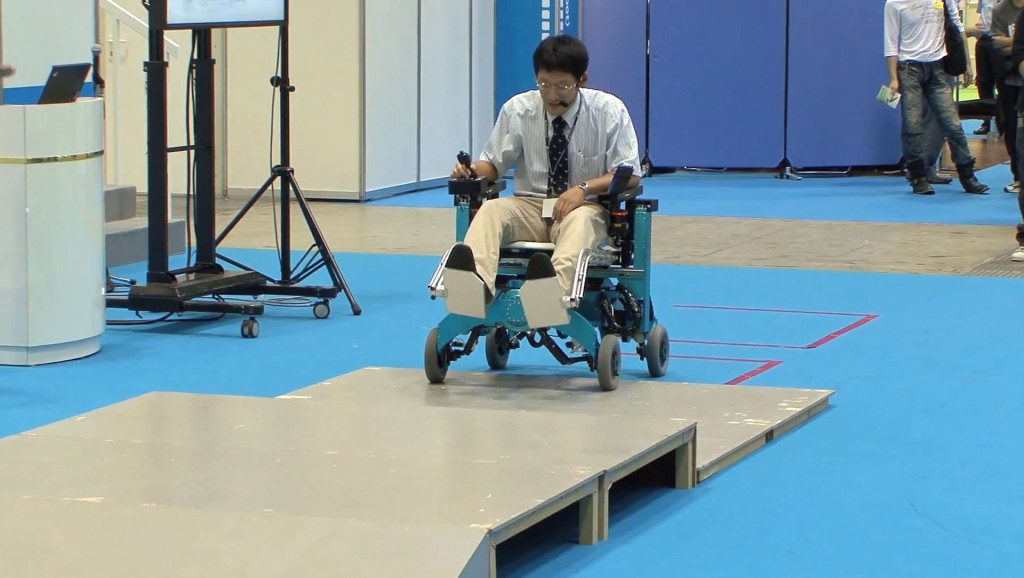
Japanese researchers stepping it up
By Eric Wilkins, Staff Writer
Wheelchair users have long been plagued by simple tasks such as maneuvering out of tight spaces or climbing stairs. However, thanks to a team of researchers from the Chiba Institute of Technology in Japan, such struggles may soon be rendered obsolete.
The technology makes use of a four-wheel drive and an advanced detection system to provide a smooth experience for the rider. When the chair encounters a step, it progresses by “walking.” By utilizing its wheels as legs, lifting and advancing one wheel and then the other, while the back wheels serve as stabilizers and then repeat the action, the chair effectively eliminates a historical impediment to wheelchair users.
“The robot has five sensors on its feet, to see if there’s anything nearby,” explained Shuro Nakajima, an associate professor at the Institute and the leader for the project. “If a sensor detects a step, the robot calculates whether it can lift that leg. It can’t raise its wheels right away, so the steering system at the rear makes preparatory motions to gain stability.”
By realigning the configuration of its wheels and deploying supports to the side, the chair can also perform a 180-degree turn, allowing the user to go in reverse safely and comfortably instead of blindly backing up like a conventional wheelchair. In addition to this, when the technology encounters a slope on one side of it, it simply matches the incline with that side’s wheels and proceeds as if it were on level ground.
A downside of the chair could be the awkward angles that the operator has to deal with while the unit tackles various obstacles. However, the research team covered that too. Thanks again to its sensors, the chair’s seat is constantly adjusted throughout the motions of the unit so that the rider can remain in a relaxed, level position.
Nakajima stressed that the unit is likely still some time away from public use, but is coming along.
“For now, we’re presenting this system and form as a concept, and the motion has mostly been worked out,“ said Nakajima. “So, we’re at the stage where we can show this robot to the world. In the next phase, we’ll get a variety of people to try it, so we can fine-tune the user experience.”


